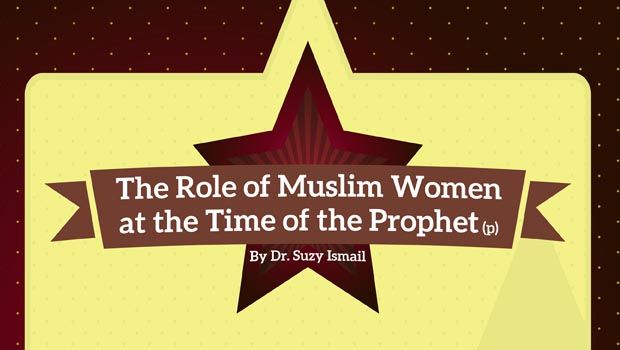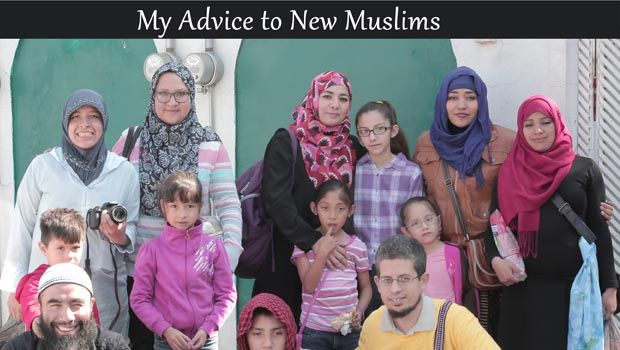When we think of the role of women around the Prophet (pbuh), the thought that often comes to mind is of prominent historical figures such as Sumayah (RA), the first female martyr in the early days of Islam, and Nusaybah (RA), the female companion who fought valiantly with her family to protect the Prophet (pbuh) in battle. While these women are no doubt role models in their piety, devotion, and commitment to the deen, there are many other admirable women as well who helped shape the role of the Muslim woman at the time of the Prophet (pbuh) and the roles that we strive to fulfill in society today. To truly understand and implement these roles, we should look no further than the Prophet’s own household. His wives and daughters truly provide the best of examples of the female role in our Islamic history.
Interestingly, today we see feminists arguing to define and redefine the role of women in society. The question of what it means to be a woman today is debated in open forums and in circles of academia. Yet the most simple and most direct answer to this question of defining gender roles lies in our own faith and in the way Islam positions both men and women in the family and in society. In Surat Al-Ahzab, we are reassured that both men and women will be judged not by their gender but by the merit of their deeds. “Indeed, the Muslim men and Muslim women, the believing men and believing women, the obedient men and obedient women, the truthful men and truthful women, the patient men and patient women, the humble men and humble women, the charitable men and charitable women, the fasting men and fasting women, the men who guard their private parts and the women who do so, and the men who remember Allah often and the women who do so – for them Allah has prepared forgiveness and a great reward” (Quran 33:35).
Along with this validation from the Quran, one need only look to the Sunnah to clearly see that while men and women are undoubtedly different from biological, psychological, emotional and social perspectives, the purpose of the creation of both males and females remains the same—to worship Allah (SWT). How is this achieved within the existing realm of gender differentiation? By following the guidelines of the deen and by excelling in what Allah (SWT) has commanded each of us to be, whether male or female — strong and faithful believers.
Islam Elevates Female Status
During the time of the Prophet (pbuh), we see the role of Muslim women changing. In pre-Islamic Arabia, female infanticide was rampant because the value of the female was scorned. The Quran makes clear that this practice is heinous and each person will be held accountable: “When the female infant buried alive is questioned for what crime she was killed, when the scrolls are laid open, when the World on High is unveiled, when the Blazing Fire is kindled to fierce heat, and when the Garden is brought near — then shall each soul know what it has put forward” (81: 8-14). Further, the Quran prohibits this abominable custom: “And do not kill your children because of poverty. We provide sustenance for you and for them” (Quran 6:151).
The banning of female infanticide coincided with the elevation of female status, and through the unfolding of the Islamic message, her rights were instituted, including the right to own property, to inherit, to accept or refuse a marriage, to seek knowledge and obtain education, and to worship Allah SWT as a full and independent individual. In tandem with those rights, the injunction of maintaining modesty was revealed in Surat An-Noor (24:30-31) and it is addressed to both men and women, along with prescribing hijab for all believing women. Thus, women were further elevated, no longer to be married off to the highest bidder, or treated like property or sex object. This change in the status of the female as commanded by Allah (SWT) and as practiced by the Prophet (pbuh), met with a great deal of resistance from those committed to the status quo, those who felt threatened by the progressive and enlightened tenets of Islam.
Khadija (RA): A Woman of Strength and Independence
The beauty of this enlightenment regarding the shift in perspective of the female role in Islam can be seen in the life of the first woman to accept Islam. Khadija (RA) was a woman who was respected in her own right, and even through today’s standard, would be seen as a woman of strength and independence. Although older than the Prophet (pbuh) at the time of their marriage, and previously twice widowed, she knew what it meant to seek strong characteristics in a spouse—trustworthiness, honesty, honor, and integrity. She understood the magnitude of the Message and the Prophet’s mission and provided the support, both emotionally and financially, that strengthened the Prophet on his journey of providing divine guidance and spiritual truth to the world.
Khadija (RA) not only fulfilled the honorable role of mother and wife in a way that we can all learn from today, she also was a strong business woman who knew what it meant to view marriage as a partnership and a shared responsibility. It is reported that she had two sons from her first marriage, Hind and Hala, and a daughter from her second marriage, Hindah. Her marriage to the Prophet (pbuh) yielded the only living progeny who continued the line of ahl-ul-bayt. This noble woman, Khadija (RA), provided the comfort and support for the Prophet (pbuh) in his most difficult times, while also struggling through her own tests such as their two male sons dying in infancy. She raised their surviving daughters to be incredibly strong and well-respected women.
Khadija (RA) not only fulfilled the honorable role of mother and wife in a way that we can all learn from today, she also was a strong business woman who knew what it meant to view marriage as a partnership and a shared responsibility.
During their 25 years of marriage, Khadija (RA) never doubted her role as the supportive wife and mother in the home. The Prophet said after her death: “She believed in me when no one else did; she accepted Islam when people rejected me; and she helped and comforted me when there was no one else to lend me a helping hand.” The ease and grace with which Khadija (RA) carried out her role is something that many women today tend to struggle with. With changing societal expectations, many women today have struggled to define and manage their roles in life. In American society, there is often an inner debate about choosing a career or motherhood, or facing the challenges of doing both. However, when we look at the role of the wives of the Prophet (pbuh), and women, in general, during that time, we understand the honor of being a mother and raising children who become strong believers, while also fully participating in society’s affairs and helping to build a just society with support, courage, and the tenacity of faith.
Role Models of Virtue and Versatility
Three years after the death of Khadija (RA), the Prophet (pbuh) married Sawda (RA), a widow who had endured a great deal for the sake of Allah (SWT) and was the epitome of selflessness and caring. She helped raise the Prophet’s daughter, Fatima (RA), who was still young at the time of Khadija’s death.
Upon reaching old age, she selflessly gave her allotted personal time with the Prophet (pbuh) to Aisha (RA) so that she would remain married and in the company of the Prophet, without burdening anyone.
Aisha (RA) was one of the Mothers of the Believers who factored largely in the transmittal of hadith long after the death of the Prophet (pbuh). As the daughter of Abu Bakr (RA), she had the same strength and characteristics of leadership as her father. Her role as a wife was more than just as companion, but also as a person of great faith, in her own right, who received so much Islamic knowledge through the words and actions of the Prophet and her interactions with him. This precious knowledge she transmitted faithfully throughout the years of her life to the believers. Spending her formative years under the tutelage of the Prophet, given her youthful energy and sharp intellect, and because she was one of the Prophet’s closest companions, she became a great source of information and understanding of the Sunnah for all generations of believers.
Following his marriage to Aisha (RA), the Prophet married Hafsa (RA), the daughter of the companion Umar Ibn Al-Khattab (RA). Similar to her father, Hafsa was of strong opinion and did not hesitate to voice her views. She freely shared her thoughts on different topics with the Prophet (pbuh), and he encouraged her to freely engage in open and honest communication with him. She was among the companions who memorized the Quran and was among those who verified the written copies recorded after the death of the Prophet. Again, the role of wife did not limit Hafsa (RA) or make her question her worth as an important member of the community, and her contributions to the ummah are important and distinguished.
Women around the Prophet (pbuh) were versatile individuals who excelled in whatever roles they assumed in life.
After his marriage to the daughters of Umar and Abu Bakr, the Prophet (pbuh) married Zaynab bint Khuzayma, a widow whose husband died during the Battle of Badr. She died shortly after the marriage, but even during that brief time she became known for her generosity and was called, with great regard, the “Mother of the Poor.” Next, the Prophet married Umm Salama, widowed after the Battle of Uhud, who was known for her wisdom, her mercy, and her faith. The Prophet would often ask her advice on matters of importance with regard to the ummah. This connection and mutual respect shows how the role of wife did not limit any of the wives of the Prophet but instead elevated them in status and allowed them to flourish in their versatile roles.
Among the later Mothers of the Believers is Zaynab Bint Jahsh (RA) who had been divorced from Zayd, the young man who was raised as a child in the household of the Prophet. We see here that even as a divorced woman, the marital status of Zaynab (RA) did not define or limit her in anyway. This is a far cry from the stereotypes and societal restrictions that are too often placed by Muslims on divorced women today. This disesteem is largely cultural rather than religious. Following the marriage to Zaynab, the Prophet (pbuh) married Juwayriyya (RA), who was known as a blessing to her people of Banu Mustaliq; Umm Habiba (RA) who was known for her strength of faith and character; Saffiya (RA), who was known for her kindness and piousness; Maymuna (RA) “the blessed”; and Mariya (RA) who was known for her fortitude — these were the last women to join the household of the Prophet (pbuh).
Delving deeply into the roles of the women who surrounded the Prophet (pbuh), we can understand that they did not define themselves by any one role. They were versatile individuals who excelled in whatever roles they assumed in life. At the core, however, their virtues of faithfulness, generosity, piety, loyalty, persistence, kindness, and courage defined these female role models in Islamic history. We should strive to emulate their example rather than bow to the expectations and pressures imposed upon us by society today.






